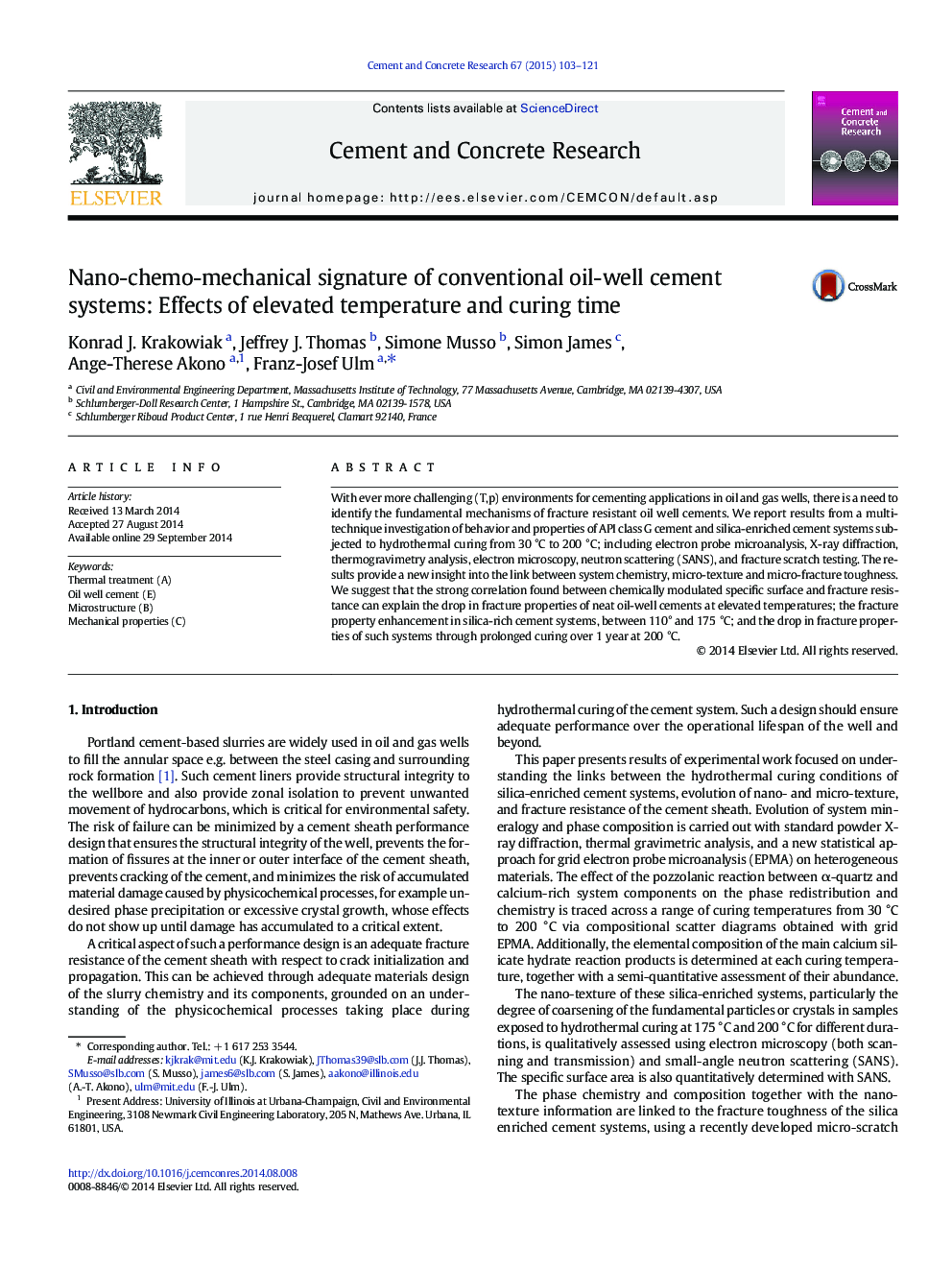| Article ID | Journal | Published Year | Pages | File Type |
|---|---|---|---|---|
| 1456206 | Cement and Concrete Research | 2015 | 19 Pages |
With ever more challenging (T,p) environments for cementing applications in oil and gas wells, there is a need to identify the fundamental mechanisms of fracture resistant oil well cements. We report results from a multi-technique investigation of behavior and properties of API class G cement and silica-enriched cement systems subjected to hydrothermal curing from 30 °C to 200 °C; including electron probe microanalysis, X-ray diffraction, thermogravimetry analysis, electron microscopy, neutron scattering (SANS), and fracture scratch testing. The results provide a new insight into the link between system chemistry, micro-texture and micro-fracture toughness. We suggest that the strong correlation found between chemically modulated specific surface and fracture resistance can explain the drop in fracture properties of neat oil-well cements at elevated temperatures; the fracture property enhancement in silica-rich cement systems, between 110° and 175 °C; and the drop in fracture properties of such systems through prolonged curing over 1 year at 200 °C.
